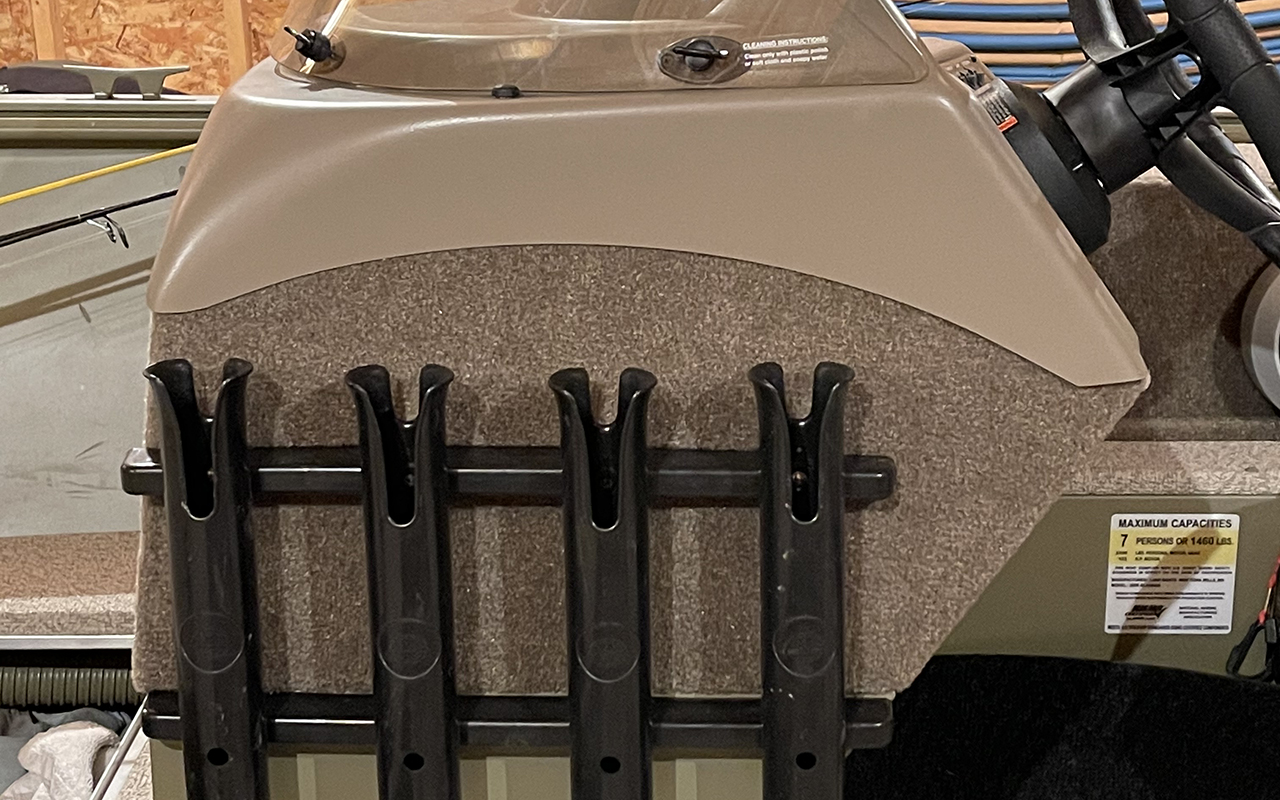
If you have been a fisherman for 10 years or more, especially a fly caster, chances are good that you’ve broken a rod. Most spinning and bait casting rods don’t come with protective cases, and often only expensive fly rods arrive in long, hard-shell tubes.
Transporting fishing rods in vehicles has always been problematic. In canoes and boats it’s even more dicey, and wandering woods trails to brooks and rocky, uneven shorelines with a long, delicate pole is a mishap waiting to happen. Rod tips get caught in truck doors, tailgates, trunk lids and even power windows. They get stuck under boat seats, stepped or sat on, and they snub on trees, boughs and the ground. And don’t even consider what happens when an angler slips on a rock in a brook, trips going down a bank or stumbles with a rod in hand.
I have accidentally broken two rods during 50-plus years of every kind of fishing imaginable on fresh and salt water. One was my Dad’s favorite dry fly pole and both were damaged during the early years of my casting career. Since then I don’t transport any rod without a protective case of some sort. Now I’ll admit, once the rod is uncased, assembled and fishing is underway, bad things can happen, but most are rare occurrences, and with a bit of care and attention equipment catastrophes are unlikely.
Rod covers made of cloth or fabric are called sleeves, socks, bags, pouches and wraps. They keep rod sections together and offer some cosmetic protection. These sectioned bags keep dirt out of reel seats, ferrules and guides and prevent dings and wear spots. Thin cloth cases offer no protection from external forces that lead to breakage, and are best used in combination with a hard tube case.
Rod tubes are long, elongated pipes made of heavy plastic, PVC, or an aluminum alloy with a screw-in or snap-lock cover on one end. Some have a separate rod bag inside while others actually have an attached stationary lining segregated into cloth compartments that each rod section slides into securely. Some of the more expensive rods include such a tube; if not, the angler can reasonably purchase one.

Using a rod case can prevent not only broken equipment, but ruined fishing trips. There’s a size and shape for every rod, and here are some of the author’s favorites that allow you to leave the reel and line attached in the case. (Courtesy of Bill Graves)
There are tubes to fit long one-piece rods right down to short tubes to accommodate an 8-piece rod. Some commercially produced tubes use components similar to a bulletproof vest; you could drive a trailer tuck over it without damage. Fishermen who want to save money build their own with just a quick trip to the hardware or plumbing store. I’ve made several myself.
A 5-foot length of white PVC pipe will fit any rod up to 10 feet when it’s apart, a small can of PVC cement, one flat closed end cap, and one open screw-in plug are all you need. The personal variable is tube diameter; two inches wide will easily hold one rod, two if you reverse ends with the rod handles. A 6-inch diameter will easily contain half a dozen rods and protective bags, perfect for airline travel. For a couple of bucks, a can of vivid spray paint will customize your DIY travel rod case.
For more conventional anglers, the local rod and gun shop, a favorite fishing gear catalog or website will offer a wide variety of rod cases. I’ve tried several over the years and have settled on one style that fits all my needs. It’s very durable, pleasant to handle and easy to use, moderately priced, colorful, aesthetically pleasing and produced by several companies.
I got to a point where I owned not only a half-dozen rod tubes, but even more protective covers. Fly reels, spinning reels, bait casting reels, saltwater trolling reels and on and on; they are just as delicate and expensive as thin graphite rods, and breakage or malfunction will ruin an outing just as quickly as a splintered rod. Cloth, neoprene, foam and felt reel covers work when reels are traveling in a tackle box or attached to the rod.
One very astute sportsman came up with the idea of combining a rod case and reel cover into one unit. This perfect combination allows a fisherman to leave the reel attached and the line through the guides and even keep a fly or lure tied to the leader while the whole outfit is stored in the travel case. No need to unpack until you’re ready to cast or troll and, once finished, just separate the rod sections and slide back into the scabbard.
Some of these hard cases for rod and attached reel are designed to accommodate two outfits at once. When multiple anglers and several rods are being used alternately in my boat by two or three casters — like on bass fishing outings when a variety of soft baits, spinners, lures and plugs are in play — I’ve installed a hard plastic, multi-tube rod holder. Each rod sits into a vertical cylinder which holds the rods upright and safe.
Breaking a rod or damaging a reel can often end a fishing trip, and it can be very expensive. Top-rate graphite and boron fly rods or antique bamboo rods can easily cost from $500 to over $1,000. So spend 25 to 50 bucks on a protective case and be safe. Accidents may still occur, but far less frequently.
This column title, “Spare the rod,” was usually followed by “Spoil the child.” in this case it’s “Don’t spoil the trip and spare your wallet.”







